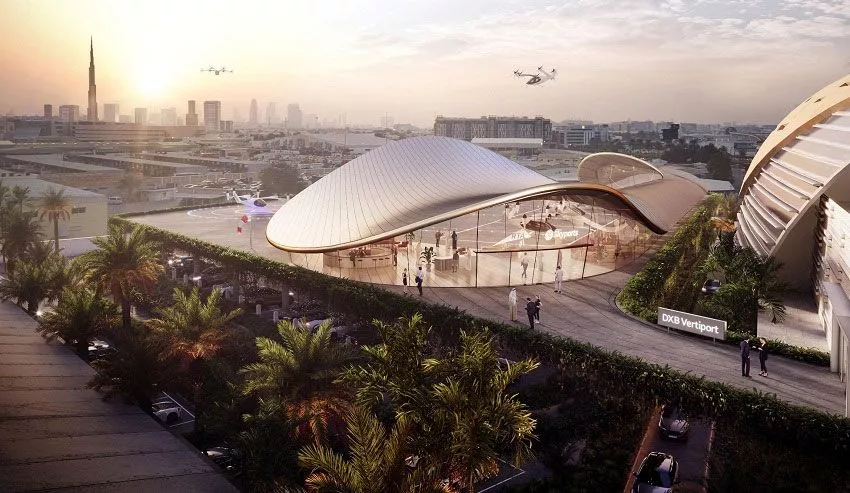Dubai will introduce flying taxis in 2026

At a recent session of ‘The Future of Air Mobility’ in Dubai, an announcement was made that the emirate would see its first flying taxis in 2026. Initially, a vertiport will be built in each of these four key areas: DXB Airport, Palm Jumeirah, Dubai Marina, and Downtown. The flying taxi routes are expected to drastically cut the travel time between these points, with the commute from Palm Jumeirah to DXB dropping from 46 minutes to a meagre 6 minutes.

The CEO of Skyports, Duncan Walker, has stated that air travel is a crucial means for transporting both cargo and people, thanks to safe and reliable technology. With its modern infrastructure, excellent airports, and steadfast government support that includes exemplary regulatory measures, Dubai has become a trailblazer in developing the ideal conditions for air travel.
Flying taxis will be able to travel a distance of approximately 150 miles (240 km) at a speed of about 186 miles per hour (300 km/hr). Although these new aerial routes will simplify short-distance travel, they are not without their own unique challenges. Walker explains that the proper technology and systems will need to be in place, in order to provide the utmost safety and efficiency of these taxis. Private companies are currently conducting various experiments, testing all aspects of short-distance aerial travel. The greatest of these challenges will be the weather, more specifically, high winds and sandstorms.
The implementation of flying taxis, in addition to the host of initiatives Dubai is undertaking, will only further solidify the emirate’s position as a global trendsetter, especially in air mobility.


